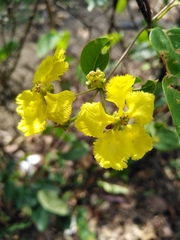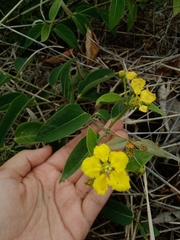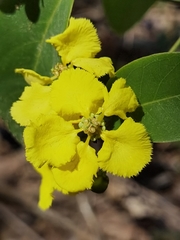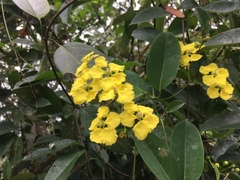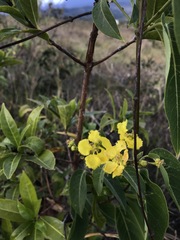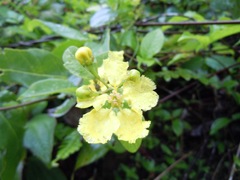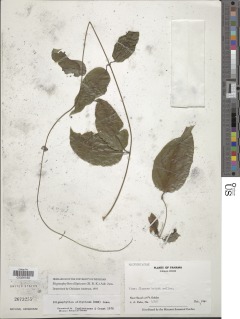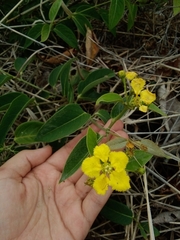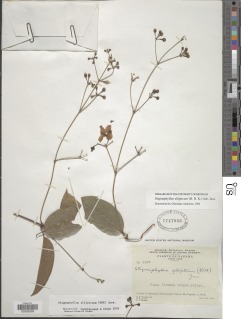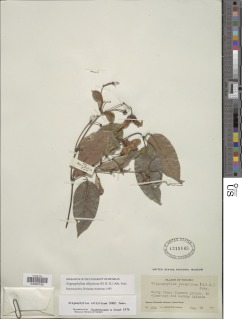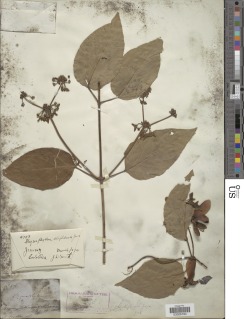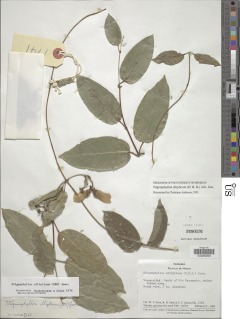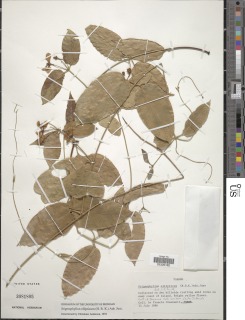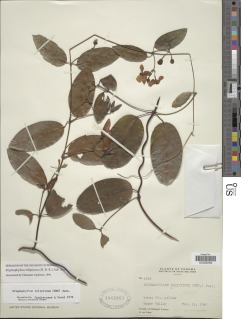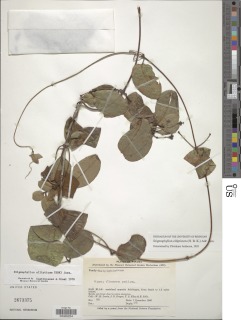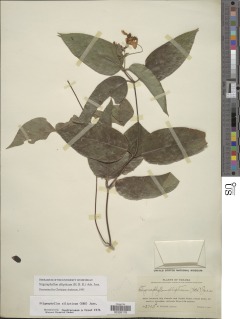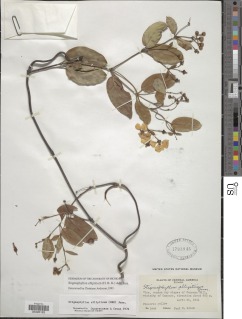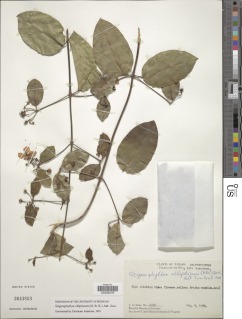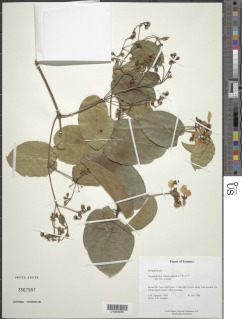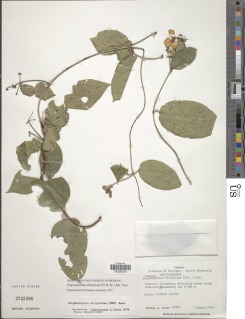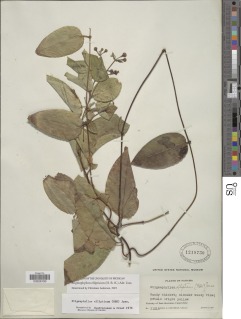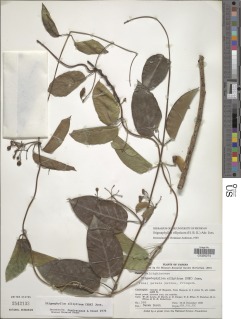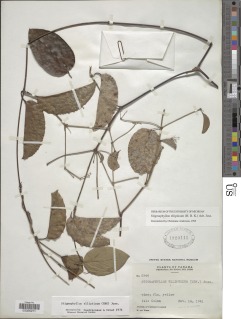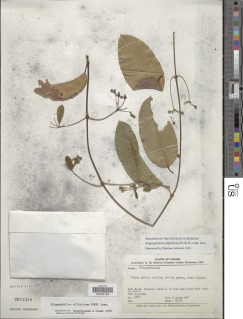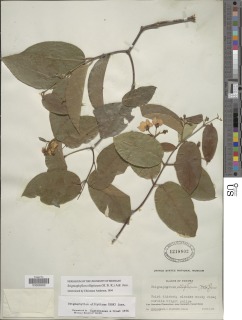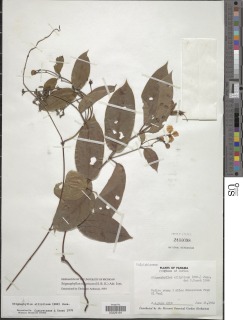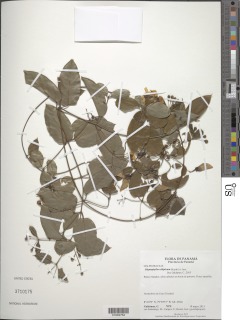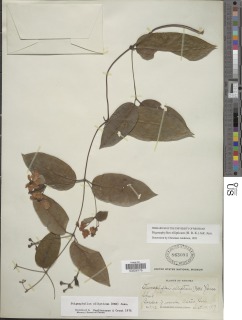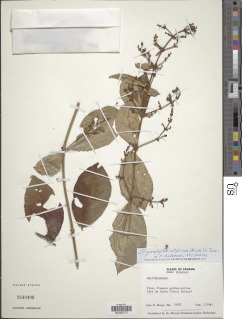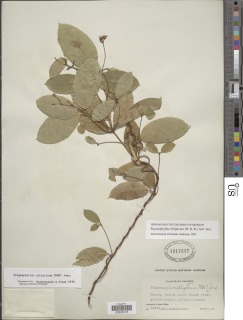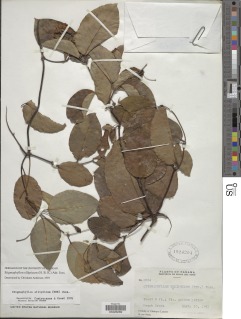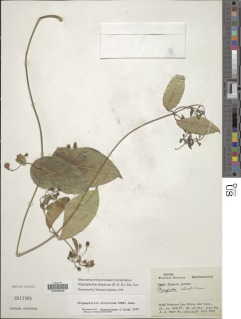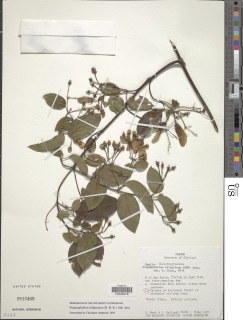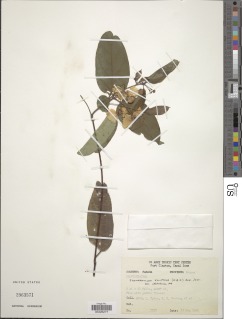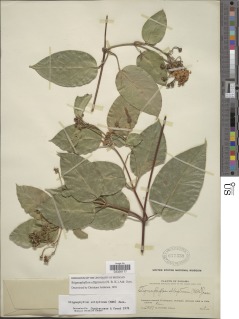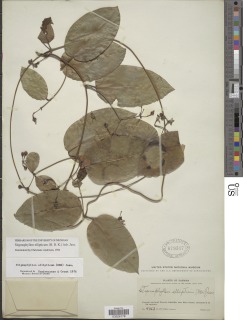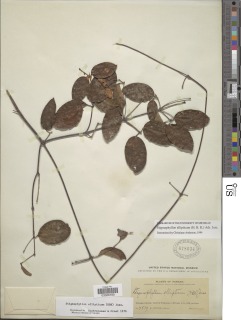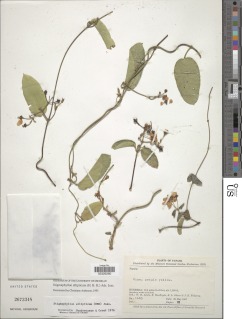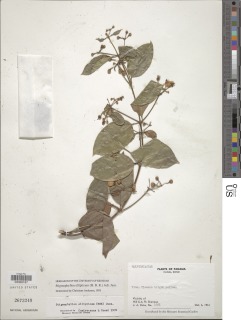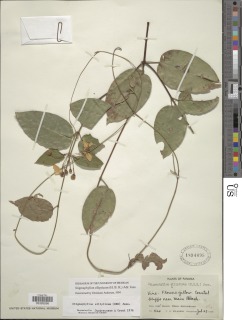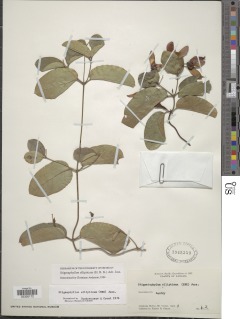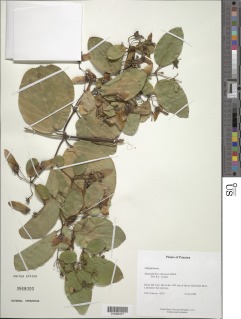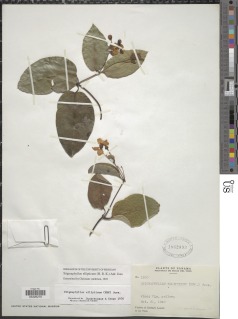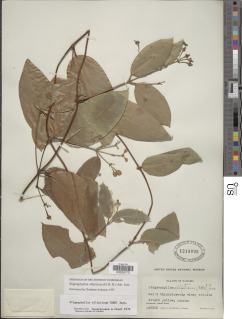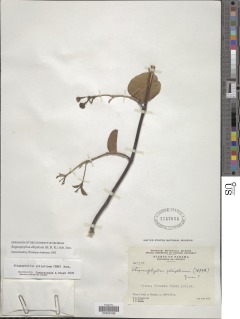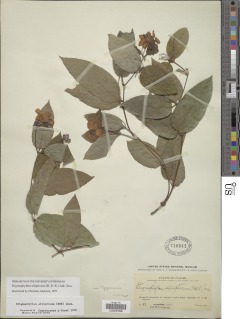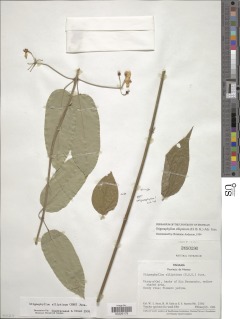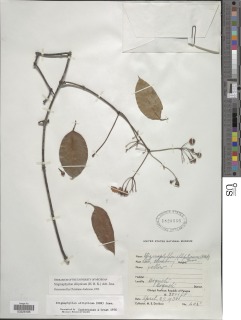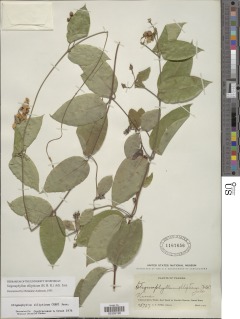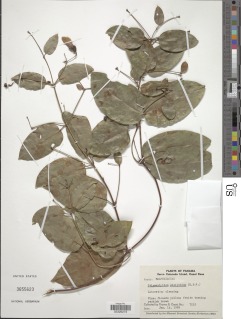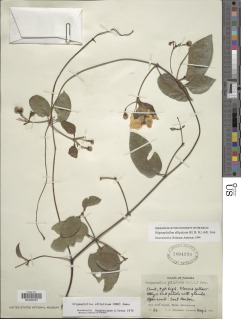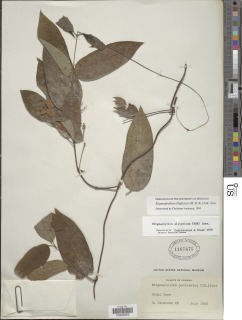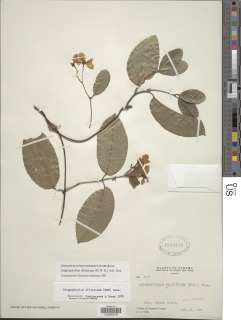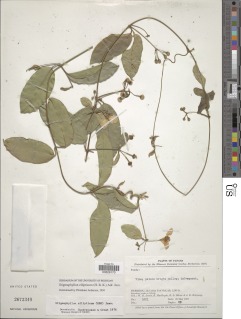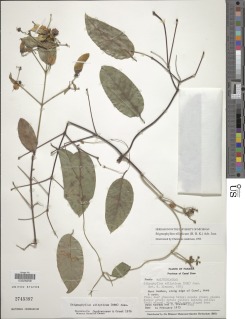

|
|
|
|
Family: Malpighiaceae
[Banisteria billbergiana Beurling] |
Descripción: Plantas trepadoras o lianas con las ramitas glabras. Hojas simples y opuestas, de 4-17 x 2-9 cm, elípticas, lanceoladas u ovadas, con ápice acuminado o agudo, bordes enteros, base redondeada o truncada. Las hojas son glabras, pero a veces pueden presentar pelos seríceos por el envés. Pecíolo de 0.6-3 cm de largo y con dos glándulas laterales en el extremo apical. Inflorescencias axilares o terminales. Flores amarillas. Sépalos con glándulas en la superficie exterior de la base. Pétalos con bordes fimbriados o dentados. Frutos en sámaras, de 2-4 cm de largo, el ala dorsal de 1.8-3.5 x 0.7-1.3 cm. A veces con espolones o crestas en la base. Especies Parecidas: A menudo se confunde con LK stigli Stigmaphyllon lindenianum LK2 , pero en S. lindenianum las hojas usualmente tienen los bordes dentados o lobulados. También se puede confundir con LK stighy Stigmaphyllon hypargyreum LK2 , pero en S. hypargyreum las hojas presentan pelos seríceos y el envés es dorado o plateado. Liana, essentially glabrous except for appressed T-shaped trichomes on some younger parts; stems reddish-brown. Petioles 1-3 cm long, bearing a pair of apical glands; blades ovate-elliptic to oblong-ovate, usually abruptly acuminate and often downturned at apex, obtuse to rounded at base, mostly 6-13 cm long, 2.5-6.5 cm wide, glaucous below. Pseudoumbels axillary, bearing few flowers; peduncles sparsely pubescent, 1.5-3.5 cm long, sometimes with sparsely pubescent bracteoles at apex; pedicels mostly 1-1.5 (2) cm long, glabrate; flowers to 2.5 cm wide; sepals rounded at apex, all but 1 bearing 2 conspicuous glands; petals 12-14 mm long, yellow, rounded, clawed at base, the margins fimbriate, the petals on either side of eglandular sepal somewhat to markedly cupular and usually fitted together after anthesis (cupped over the fertile parts); stamens 10, unequal, 6 long and equaling style, 3 of these situated beneath or adjacent to stigmas, producing much pollen, 3 long stamens sterile or producing little pollen, 2 short fertile stamens on either side of eglandular sepal, the other 2 short stamens on the opposite side of the flower sterile; anthers whitish, globular, fleshy, the connective produced above; pollen tan, sticking together loosely; styles 3, the stigmas green, the 1 opposite the eglandular sepal spatulate with an active gland near apex, the other 2 stigmas adjacent, broadly expanded, with a slit on the inner side, this oozing pollen from the anther below. Fruits usually of 3 samaras fused at base, reddish at maturity, especially the outer margin and apex, pubescent especially on seeds; dorsal wing 2-3 cm long, ca 1 cm wide, with a small crest or lobe on inner margin above seed, the lateral wings reduced, variously lobed or sometimes divided into 2-4 narrow appendages. Croat 6438, 7901. Common in the forest, along the shore, and in clearings, growing over vegetation or along the ground. Flowers and fruits throughout the year. Veracruz, Mexico, to Colombia and Ecuador; West Indies. In Panama, ecologically variable; known from tropical moist forest in the Canal Zone, Herrera, Panama, and Darien, from tropical dry forest in Panama, from premontane wet forest in Panama and Chiriqui, and from tropical wet forest in Colón. See Fig. 310. |
|
|
|










